This past weekend was the Queens County Bird Club‘s annual Doodlebash, a weekend of birding Doodletown Road in Bear Mountain State Park and the Bashakill in Sullivan County. I could not attend the the entire Doodlebash so I had to content myself simply with Saturday’s Doodle (which sounds dirty but I swear it isn’t). Loyal 10,000 Birds readers will already be aware of the marvels of Doodletown Road, considering we have written about our visits there before.
Anyway, the turnout for the field trip was great and our enthusiasm level was high. So high, in fact, that three of us started up the trail before everyone from the club had arrived and so started the day a little bit ahead of the game by finding a singing Cerulean Warbler, a singing Blackburnian Warbler, and a soaring Black Vulture within our first five minutes birding! Not bad! We took our time, birding the trail slowly, both to avoid missing anything and to prevent ourselves from getting too far ahead of the rest of the club, who caught up to us when we paused to admire a perched male Ruby-throated Hummingbird.
As we continued we were amazed by the sheer abundance of Hooded Warblers, which sang both their standard song (Two-whee two-whee two-wheech-ee-oh) and an alternate song from nearly everywhere. I was getting very bothered by not being able to figure out what the alternate song was until Ian Resnick, the trip’s leader, clued me in to the fact that Hooded Warblers often sing a second song. The hoodies, Baltimore Orioles, Blue-gray Gnatcatchers, American Redstarts, and a humongous horde of Cedar Waxwings would be our regular companions throughout our morning at Doodletown. I would guesstimate that just those five species totaled about 75% of our sightings.
Of course, one of the main objectives of the trip was wood-warblers. Aside from the aforementioned Cerulean and Hooded Warblers we really wanted to track down the previously reported Kentucky Warbler. Kentucky Warblers haven’t made a breeding attempt at Doodletown Road in several years so a male singing like it is on territory is a wonderful sign. The fact that this particular male sings from high up and in deep foliage made things a bit difficult. When we arrived at its location it was easy to hear, but the other bird club present had no luck seeing the bird and we stayed and scanned and scanned and scanned. Finally, after a methodical search, I had the bird in my bins. “I have the bird” I announced and then found that I could not manage to get others on the bird.
Talk about frustrating! But I didn’t dare remove my eyes from the binoculars because I was afraid I would lose the bird’s location, so I tried directing people from what I could see, which was a large sunlit oak trunk. I would move my binoculars a field at a time and try to direct people from what I was finding but eventually realized that the bird had left its partially-obscured perch. Fortunately, my observation was backed up by the bird singing from a noticeably different location. Unfortunately, we were not able to get the bird in anyone’s sight again. We were, however, able to get great and long looks at this male Blue-winged Warbler.
The trip continued, and when everyone was staying put trying to find the Kentucky Warbler again I continued ahead to see if I could get lucky and find a Cerulean Warbler coming down low that I could photograph. I had no luck there but I was fortunate enough to track a pair of Blue-gray Gnatcatchers to their nest, a delicate cup made of lichens and spider silk. It was great fun watching them come and go with beaks full of food to feed their young, and I was even able to get some shots!
A nearby Cerulean Warbler was singing it heart out and when the club caught up some joined me in watching the gnatcatchers while others checked out the warbler. Talk about a win-win situation! And the day just kept getting better with more and more birds as we hiked up and up until we finally took our lunch break.
Now, believe it or not, while we were eating lunch yet another Cerulean Warbler started singing directly above us! He sang for at least the last ten minutes of lunch and was still going when we packed it up and continued our hike. Most of the club continued up the trail a short way but I wanted to head back down the trail to see if I could get one of the Hooded Warblers to cooperate. I was not lucky with the Hooded Warbler (and because I was not with the main group I missed a Timber Rattlesnake and a Worm-eating Warbler). But the three of us who headed back down the mountain were rewarded with great looks at a pair of Indigo Buntings with the female gathering nesting material, an amazing fly-by Pileated Woodpecker, and a very large Black Rat Snake (Elaphe obseleta).
Back at the cars, parked out on route 9W, we managed to scare up a Louisiana Waterthrush along the stream that crosses the road and a brief visit to Iona Island nette several more new speceis for the day, like Green Heron, Swamp Sparrow, some swallows, and an Osprey. My final stop of the day, along with the other two gentlemen who could not stay for the whole weekend-long trip, was Mine Road, where Golden-winged Warblers are still making a stand despite the Blue-winged Warbler‘s attempts to swamp them genetically. We were lucky and found a previously reported male Golden-winged Warbler rather high up, singing away…
It was a great way to end the trip, and the ride back to Queens was uneventful (except for a brief stop for some ice cream). Hopefully, next year I’ll be able to experience the full Doodlebash, though if the birds are as good on day two as they were this year on day one it might be too much for one birder’s brain to take!

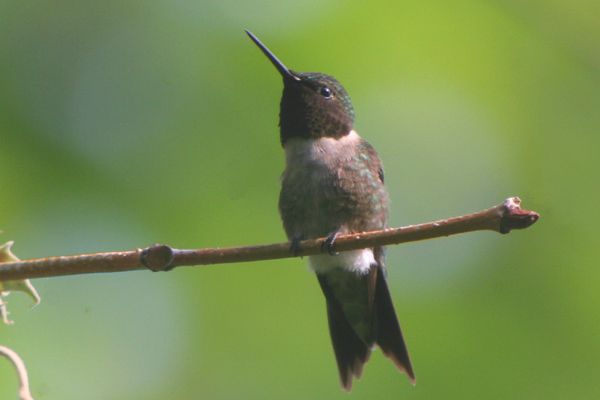
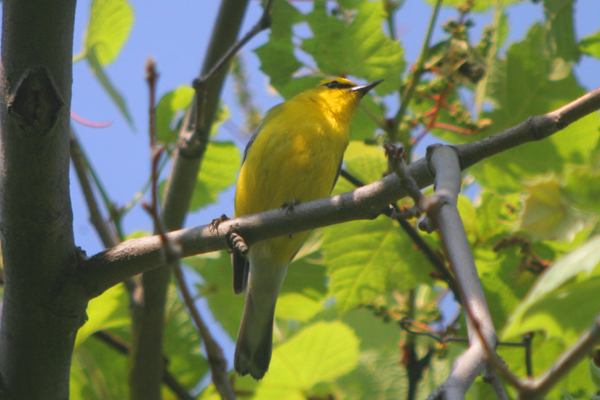
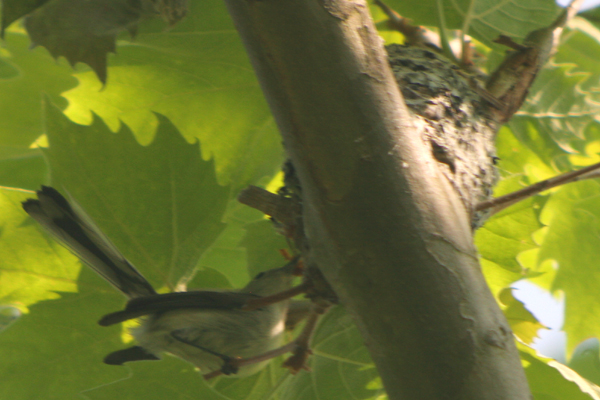
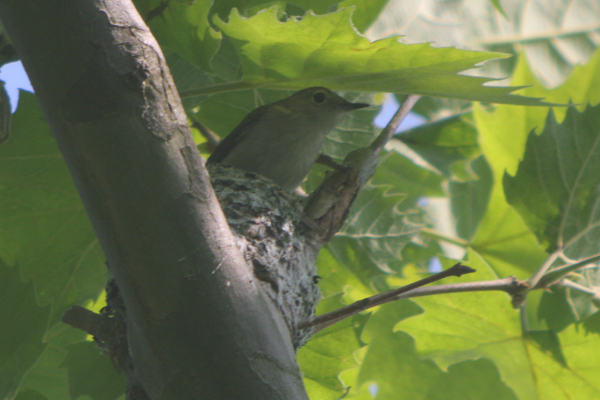
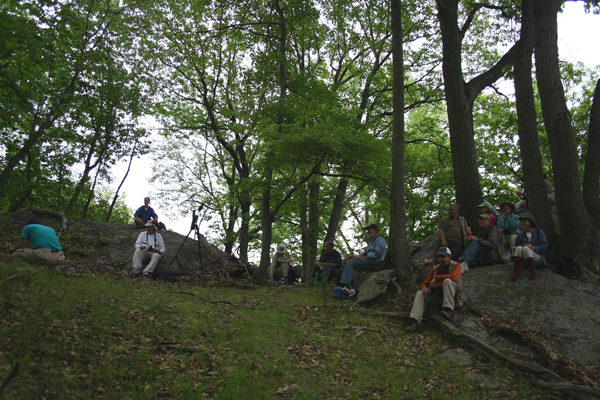
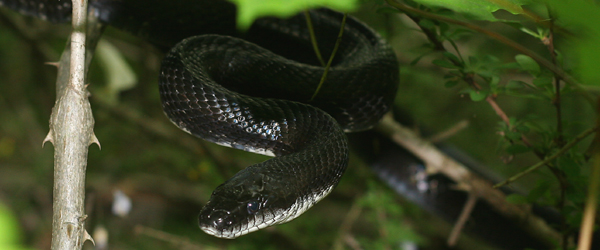
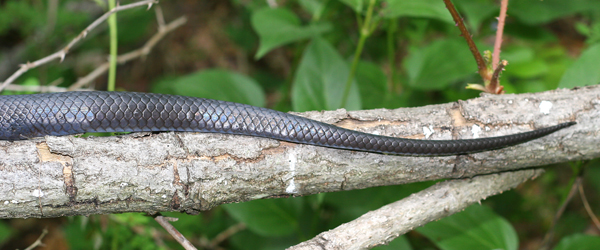
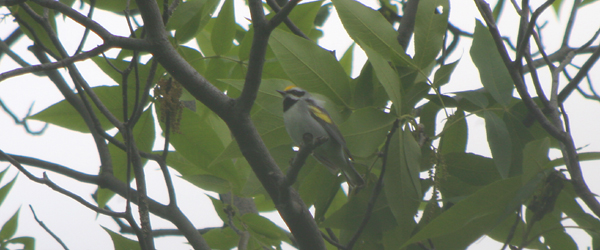
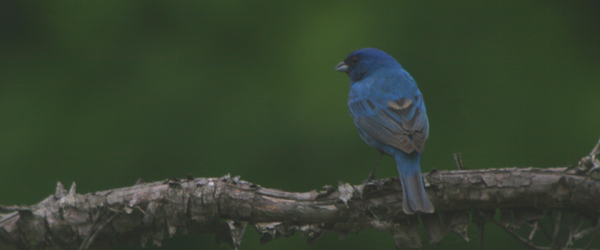










Must be the weekend for Snakes…
One of these days I’ll have to get to Doodletown.
Corey, one of the benefits of staying for the whole Doodlebash (or, like me, till the sun sets) is dinner at Bavarian Gardens, Middletown, where you can celebrate the birds with giant draft beers. Hope you (and I) can Bash as well as Doodle in 2010.